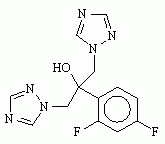Q I've heard of stress suppressing your period, but can it also do the opposite and make it come about twice a month or even every week?
A Yes. Stress has a powerful effect on your body, and the female reproductive system is particularly sensitive to what's going on in your mind. A small region in your brain called the hypothalamus takes all sorts of cues from your body--including your nutrient intake and stress levels--and then orchestrates a cascade of hormones that can affect your cycle. When you're anxious, for example, ovulation often doesn't occur. While this usually results in fewer periods, more frequent, erratic bleeding also can ensue.
Having said this, though, don't automatically assume the culprit behind your bleeding is stress. Bleeding between periods can have many causes, including noncancerous tumors in your uterus (fibroids) or lesions on your cervix, an abnormally thick uterine lining or, less often, blood-clotting disorders or cancer. Even if your doctor rules out those conditions and says it is "just stress," sit up and take notice. If anxiety is affecting your menstrual cycles, you can bet it's affecting your health in many other ways as well. Take this symptom as your body's way of sending you an urgent warning: Reflect on the stressors in your life and start making changes--for the sake of your body and mind.
Q Over the past eight months, I've been getting yeast infections one right after the other. Usually these infections go away with treatment, but within the next two weeks, I get another one. What does this mean, and are there any natural ways of dealing with them?
A Nearly all women have both yeast (a fungus) and bacteria in their vaginas, but when the balance between them is upset, one or the other goes to town, so to speak. The most common example of this imbalance occurs after you've taken a round of antibiotics. Because the bacteria in the vagina have been reduced, yeast has a chance to flourish. Douching, using a new spermicide or lubricant, going on the pill or having unprotected sex also can upset this delicate balance, as can hormonal surges (many women get yeast infections at the start of their period), diet changes and stress.
Over-the-counter remedies such as Monistat or Gyne-Lotrimin are very effective in treating occasional yeast infections. However, about 3-5 percent of women are genetically predisposed to recurrent yeast infections, which may require prescription treatment. First, have your doctor perform a culture to confirm you have a yeast infection and not something else, such as a sensitivity to spermicidal gels or condoms or a bacterial infection. I would also ask your physician about the anti-fungal drug Diflucan--a recent study in The New England Journal of Medicine found that it works preventively to halt yeast infections in those with chronic outbreaks.
There are also natural, preventive measures you can take. Eating 1 cup (8 ounces) of yogurt containing lactobacillus acidophilus a day inhibits the growth of fungi that can contribute to yeast infections, studies show. And since yeast thrives on sugar, try to limit your intake.
Tracy W. Gaudet, M.D., is the director of the Duke Center for Integrative Medicine in Durham, N.C., and the author of Consciously Female: How to Listen to Your Body and Your Soul for a Lifetime of Healthier Living (Bantam Dell, 2004).
Send your questions to Shape, Ask the OB-GYN, 21100 Erwin St., Woodland Hills, CA 91367; fax: (818) 704-7620; e-mail: asktheob-gyn@Shape.com.
COPYRIGHT 2005 Weider Publications
COPYRIGHT 2005 Gale Group



